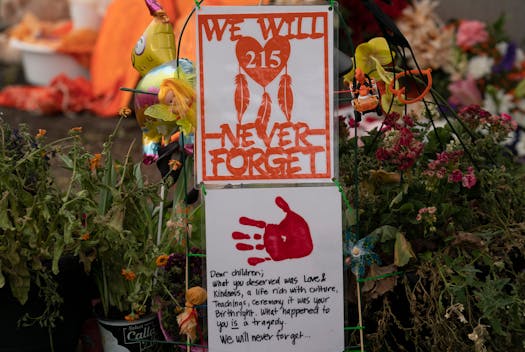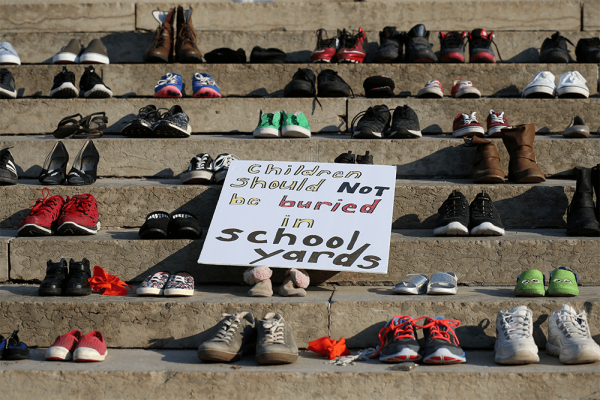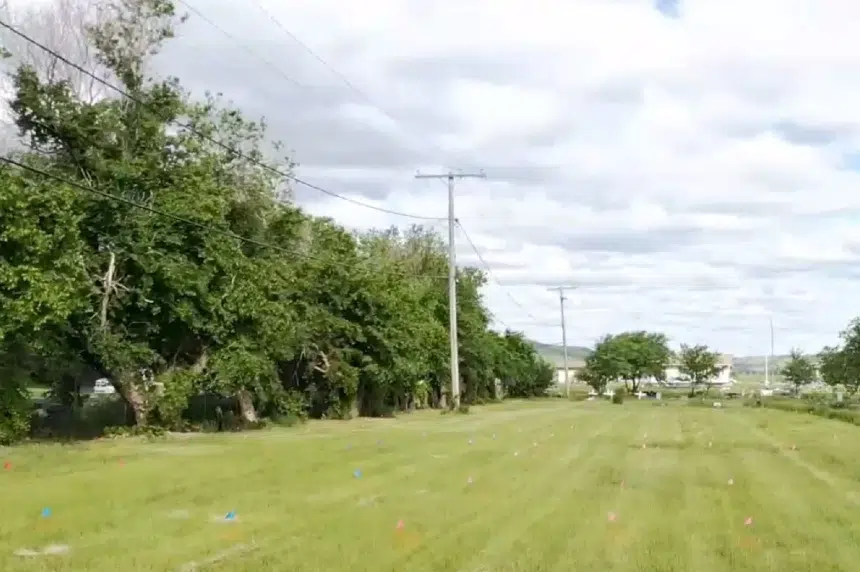Healing a bitter past: the Canadian model
. |
| JONATHAN HAYWARD, Canadian Press via AP file. |
Recent reports have prompted me to recall the Truth and Reconciliation Commission meetings I attended with a Canadian friend in Edmonton, Alberta, in March 2014. The commission's purpose was to bring light to the dark history of Canadian residential schools, which were modeled after similar schools for Native children in the United States.
Perhaps the fear that we in America will discover similar unmarked graves of Native children who died in the boarding schools we forced them to attend will lead us to seek the truth and attempt reconciliation, as our Canadian neighbors have done.
What would a truth and reconciliation commission achieve? What did it achieve in Canada? Why would we venture on such a path?
On a practical and immediate level, the meetings held across Canada awakened people. It awakened me, the outsider looking in, feeling shame and remorse.
The meetings gave voice to those harmed by the residential schools. One account remains vivid:
A First Nations man described how he lived with his tightly knit extended family of nomadic hunters and harvesters. One day when he was eight or nine a boat came upriver to where they were camped; Indian agents came ashore and an argument ensued. He was wrenched away from his parents, who were screaming in disbelief, and forced onto the boat. As the boat pulled away the last thing he saw was his parents waving their arms. It was the last time he saw them.
When he arrived at the school they cut off his hair and burned his traditional clothes, and fed him food he found repulsive. He could not speak English and no one could speak his language. He slept in a large room among strangers. He was physically punished for doing things wrong he didn't even understand. He had no idea why he was there and why such terrible things were happening to him. Eventually, as he learned English, he was taught that his beloved grandparents from whom "he had never heard a bad word" worked for the devil. Yet he missed his family more than he could express.
He described sexual abuse, corporal punishment and bullying. When he left the school as a teenager he fit nowhere. He had lost his native culture and language, which he had learned to be ashamed of. But he didn't fit into white society, which for him was racist. Like many he fell victim to alcohol and drugs.
His story was one of many.
The second purpose of the meeting was apology. A representative from the Catholic Church, which had administered most of the schools, read a letter that began: "We, the Bishops of Alberta and the Northwest Territories, apologize to those who experienced sexual and physical abuse in residential schools under Catholic Administration … also we apologize for participating in governmental policies that separated children from their parents and that suppressed their cultures."
Representatives of the provincial and national governments addressed the audience: "We apologize. Nothing we can say can make this past go away. We may have thought we were doing good, but we were doing something terribly wrong. Hopefully by saying this we can begin a process of healing."
Later, Frank Oberle, Minister of Aboriginal Relations wrote: "Residential schools will always be among the great wrongs of Canadian history. An example of the profound harm that we are capable of when inequality, paternalism and racism prevail over our sense of common humanity."
The third purpose was concrete change. The most important may have been mandating that the unvarnished history of the residential schools become part of the K-12 curriculum across Canada. The commission also produced four lengthy documents that contained the results from their research and public hearings, free and easily available on the web. The overview is found in "Honouring the Truth, Reconciling for the Future: Summary of the Final Report of the Truth and Reconciliation Commission of Canada," easily searchable.
These reports remind us what humane societies do: they study their missteps, even evils such as slavery and cultural genocide. They admit to wrongdoings and invite those who were harmed to speak. The most powerful speak humbly and ask for forgiveness. Finally, humane and honest societies rewrite their history when new knowledge and new awareness comes to the surface. They do it in the open, in a dialogue where all are invited to speak.
I'd be thrilled if some of the Americans riled up about "critical race theory" would read these Canadian documents and think about what it really means to face up to our past, make amends and move forward.
Douglas Harper, of Forest Lake, is professor emeritus of sociology, Duquesne University.
**
Residential schools: How the U.S. and Canada share a troubling history
U.S. Secretary of the Interior Deb Haaland says she wept when she heard news from Canada about what are believed to be unmarked burial sites of children's remains near a former residential school.
The news made Haaland think of her own Pueblo ancestors such as her
grandmother, who as a girl was taken from her family, put on a train and
placed in the American version of a residential school for five years.
After crying, Haaland took action. The New Mexico politician now leads
the federal department that ran U.S. assimilation schools — she's the
first Indigenous person to do so. And she's launched an investigation
into their legacy.
In a memo last
month to the Department of the Interior, she said the news from Canada
should prompt a reflection on what Americans refer to as native boarding
schools. She requested a report by next year on the schools, their
cemeteries and on the possibility of finding unidentified remains.
It's only fitting that movements to assess the legacy of assimilation
schools in both Canada and the U.S. should occur simultaneously. That's
because they've been intertwined from the start. That point was made
several years ago in Canada's Truth and Reconciliation Commission report.
An architect of Canada's residential schools policy, in an 1879 paper, looked at boarding schools just established in the U.S. and urged Canada
to create similar ones. On the basis of that paper from Nicholas Davin,
Canada's federal government opened three such schools, starting in 1883
in the future province of Saskatchewan.
Both countries
borrowed ideas from reformatories being constructed in Europe for
children of the urban poor, said the Truth and Reconciliation report.
Haaland's great-grandfather was taken to the institution that most
influenced Canada's program: the now-defunct Carlisle Indian Industrial
School in Pennsylvania. The founder of that school, army officer Richard
Pratt, infamously voiced the
philosophy behind his program: "Kill the Indian [in him] … and save the
man," meaning Indigenous Peoples should be assimilated, not
exterminated.
**
Final funding for Woodland Cultural Centre from Canada and Ontario Government helps complete Phase 3 of the restoration project.
 “Our
government stands shoulder to shoulder with Indigenous partners as we
support community-directed work to identify and commemorate Indigenous
Residential School sites across the province. Today’s investment in the
Woodland Cultural Centre is critical to the important work being done by
Six Nations of the Grand River to build a national resource to support
public education and centre for healing for the community.” – The Honourable Greg Rickford, Ontario’s Minister of Indigenous Affairs
“Our
government stands shoulder to shoulder with Indigenous partners as we
support community-directed work to identify and commemorate Indigenous
Residential School sites across the province. Today’s investment in the
Woodland Cultural Centre is critical to the important work being done by
Six Nations of the Grand River to build a national resource to support
public education and centre for healing for the community.” – The Honourable Greg Rickford, Ontario’s Minister of Indigenous Affairs
“It was a good day to know that the site of the former Mohawk Institute Indian Residential School will receive the funding necessary to restore the building and will house the history and stories of the “Mushhole” school children. Having the site designated as a National Heritage Site is significant to this history as well.” – Roberta Hill, Mohawk Institute Residential School Survivor
Download PDF Press Release Here
Learn more about the Save the Evidence Campaign
**
READ: US churches reckon with traumatic legacy of Native American schools
“Boarding schools — along with the entire structure of our churches and government and policing and military — combine to create a particular world. White Christians are safe in that world.” — @gindaanis





